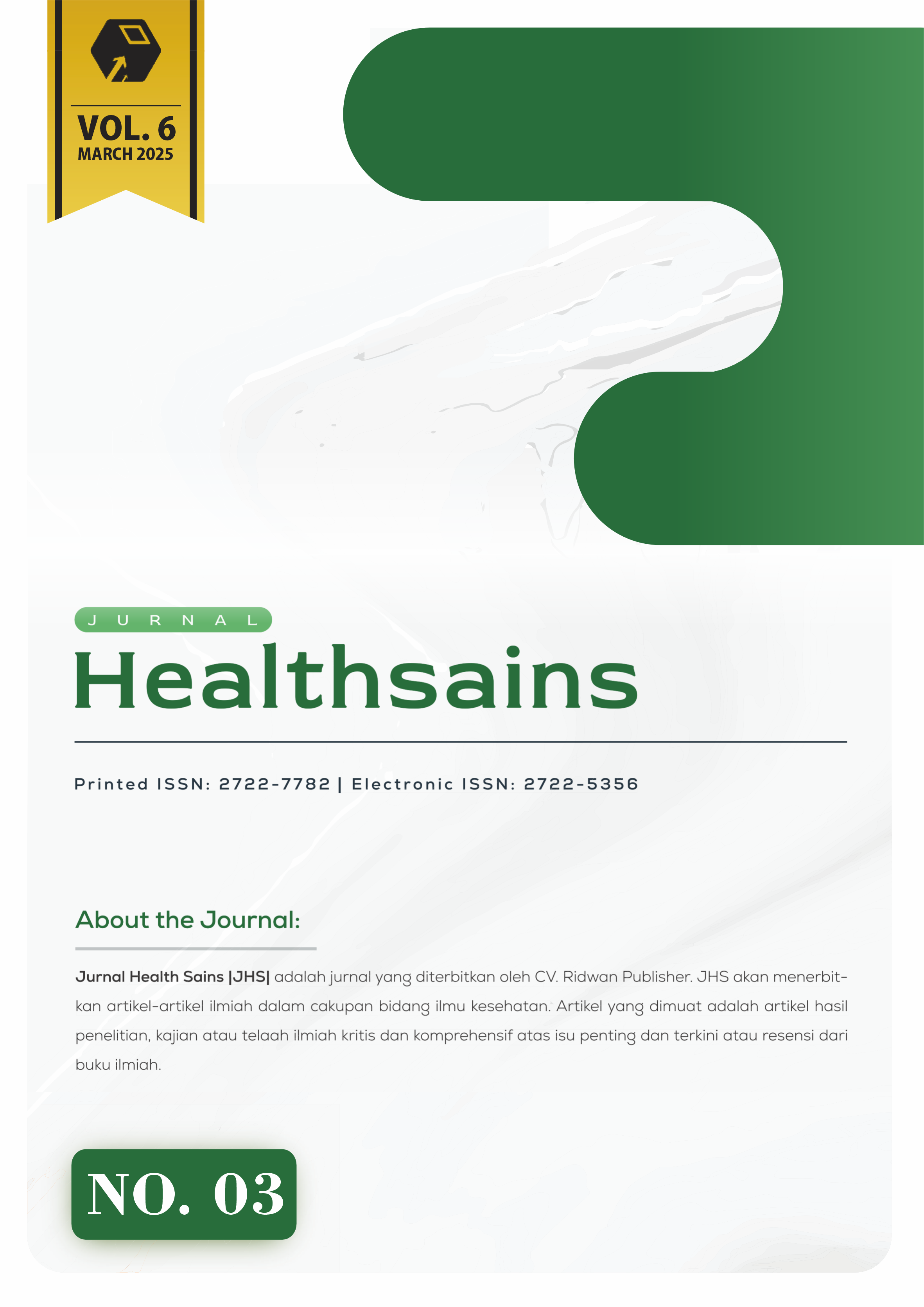PHACOMORPHIC GLAUCOMA WITH SENILE IMMATURE CATARACT: A CASE REPORT
DOI:
https://doi.org/10.46799/jhs.v6i3.1569Keywords:
glaucoma, phacomorphic, cataract, phacoemulsification, trabeculectomyAbstract
Phacomorphic glaucoma is a secondary angle-closure glaucoma caused by lens thickening due to cataract formation process, potentially leading to increased intraocular pressure and a risk of permanent optic nerve damage, resulting in visual impairment. This report discusses a case involving a 57-year-old female presenting with blurred vision and pain in one eye, diagnosed with phacomorphic glaucoma with senile immature cataract based on history taking, and ophthalmological examination. The findings revealed decreased visual acuity, lens opacity in the left eye with a positive shadow test, increased iop, and shallow anterior chamber. the patient initially received medical therapy to lower intraocular pressure, followed by definitive treatment, which consisted of a combination of phacoemulsification with intraocular lens implantation and trabeculectomy. postoperative results showed symptom and visual acuity improvement, although the prognosis for visual function depends on the degree of optic nerve damage prior to treatment. primary management of phacomorphic glaucoma involves cataract extraction, which causes pupil block, that is often combined with trabeculectomy to effectively control intraocular pressure.
References
Allison, K., Patel, D., & Alabi, O. (2020). Epidemiology of glaucoma: The past, present, and predictions for the future. Cureus. https://doi.org/10.7759/cureus.11686
Ariesti, A., & Herriadi, D. (2018). Profile of glaucoma at The Dr. M. Djamil Hospital Padang, West Sumatra. Journal of FK Unand. Retrieved from http://jurnal.fk.unand.ac.id
Artini, W. (2018). The effectiveness of combined cataract and glaucoma surgery one step and two steps in primary angle closure glaucoma patients. eJournal Kedokteran Indonesia, 6(3). https://doi.org/10.23886/ejki.6.10106
Astari, P. (2018). Cataract: Classification, management, and complications of surgery. CDK 269, 45(10). Faculty of Medicine UGM.
Ciputra, F. (2022). Phacomorphic glaucoma: A literature review. JKU, 11(2), 887-896.
Harpet, G. (2016). Medscape: Phacomorphic glaucoma.
Ilyas, & Yulianti, S. (2017). Eye disease science (5th Edition). Faculty of Medicine Indonesia.
Kumar, J., & Gupta, A. (2023). Risk factors for development of phacomorphic glaucoma in mature cataract - A hospital-based study. Jhansi International Journal of Advanced Research, 11(April), 1395-1399.
McMonnies, C. W. (2017). Glaucoma history and risk factors. Journal of Optometry, 10(2), 71-78. https://doi.org/10.1016/j.optom.2016.02.003
PERDAMI. (2018). National guidelines for glaucoma medical services.
Schuster, A. K., Erb, C., Hoffmann, E. M., Dietlein, T., & Pfeiffer, N. (2020). The diagnosis and treatment of glaucoma. Dtsch Arztebl Int. https://doi.org/10.3238/arztebl.2020.0225
Sitorus, R., Sitompul, R., Widyawati, S., & Bani, A. (2020). Textbook of ophthalmology (First edition). University of Indonesia Publishing.
Soemantri, I., & Ilahi, F. (2018). National guidelines for glaucoma medical services.
Suhardjo. (2012). Eye lens and cataract in eye health science (2nd Edition). Faculty of Medicine UGM.
Downloads
Published
Issue
Section
License
Copyright (c) 2025 Ruth Syeela Widianty

This work is licensed under a Creative Commons Attribution-ShareAlike 4.0 International License.
Authors who publish with this journal agree to the following terms:
- Authors retain copyright and grant the journal right of first publication with the work simultaneously licensed under aCreative Commons Attribution-ShareAlike 4.0 International (CC-BY-SA). that allows others to share the work with an acknowledgement of the work's authorship and initial publication in this journal.
- Authors are able to enter into separate, additional contractual arrangements for the non-exclusive distribution of the journal's published version of the work (e.g., post it to an institutional repository or publish it in a book), with an acknowledgement of its initial publication in this journal.
- Authors are permitted and encouraged to post their work online (e.g., in institutional repositories or on their website) prior to and during the submission process, as it can lead to productive exchanges, as well as earlier and greater citation of published work.






